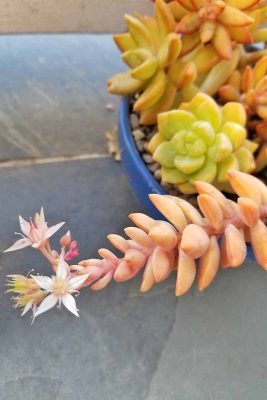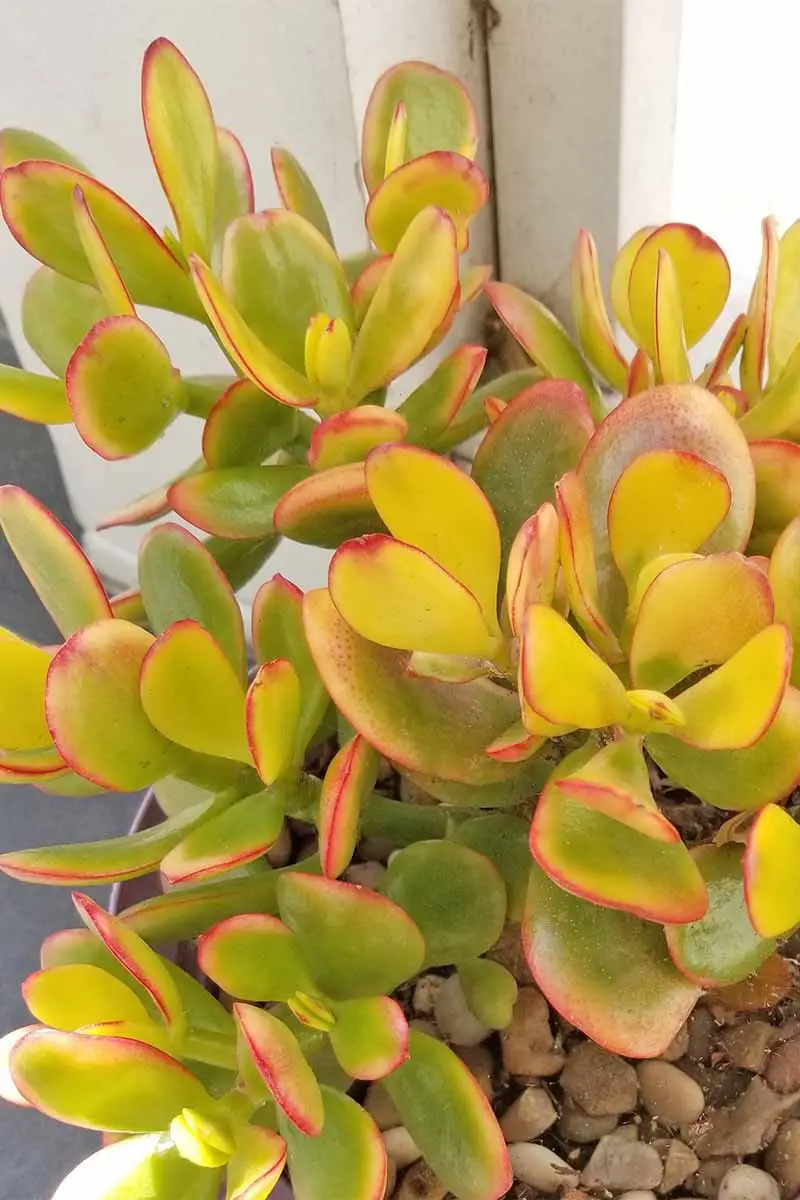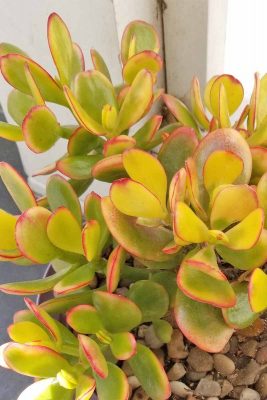Succulent Plants for the Home, Care, Gasteria, Aloe Vera, Haworthia, Pots
Succulent Plants for the Home guide
Thick and fleshy plants to retain water in arid climates or soil conditions Article
21 Aug 2018
Healthy Succulent Plants for the Home
Improve your Living Space with Happy and Healthy Succulents
A succulent is touted to be loyal just as long as they get some TLC (Tender Loving Care). It is the ‘easy’ plant that will make your heart mushy like those sturdy, handsome TV husbands in the 1950’s. But houseplants, just like marriages, can be more work than you bargained for; and the same goes for succulents.
blooming succulent plants in the home:

Be it as it may, you can still be a proud owner of a succulent or two. All you need is to know how to care for the plant, and this is what you are about to discover. You should, nevertheless, first understand what you have so that you know who to better take care of it.
Succulents come in different types, and the most popular are the Gasteria, Aloe Vera, and Haworthia. Each may have unique care requirements, but we will address the basics that ensure any succulents grow happily and healthy.
- Use The Appropriate Plant Pot
Your succulent needs a lovely home, and that means a pot that has drainage holes. You opt to use any container you feel can hold the soil and the plant. It can be an animal-shaped receptacle, the traditional pot, or a plastic bucket, as long as it has drainage holes.
The importance of this is to allow water to pass through the soil and drain off via the holes so that the plant’s root do not root because of too much water. The holes also aid in aerating the soil. If you are to work with a glass container, consider its fragility even if you manage to find a one with holes.
As your succulent grows, a bit of the lower leaves will die in the process and this should not be a reason to panic. You only need to pluck the dead leaves out so that they do not shade the soil making it harder for it to dry. Moreover, the freed up space encourages the growth of new foliage.
- Water The Plant
Water is the most essential things for the survival of your succulent plant. You should water it with plenty of water in one go as opposed to using a bit of water often. Keep in mind that you will not have to water the succulent everyday if you do this.
The repeat job is usually because of using a small amount of water. When irrigating your plant, pour water into the container until you see it coming out of the drain holes. You will water the succulent again once the soil is dry. Frequent watering affects the soil moisture and causes the plant’s roots to rot.
You should reduce the amount of water during the colder months since the plant’s water demand is less. Nevertheless, monitor the moisture content of the soil to know the amount of irrigation to do.
When following this strategy, the irrigation will most likely be once a week or so. Check if the soil is dry to know if you have to water the succulent. The size of the container may also influence the frequency of watering the plant. If it is a huge and deep pot, then the soil in it will retain enough moisture thus reduce the rate of irrigation.
A small and shallow container will, on the other hand, have a short period of water and moisture retention in the soil thus necessitating the need for frequent irrigation.
- Plenty Of Sunlight
With the plant growing indoor, there is the need to pay attention to the color of its foliage. And you should also take note of the same when buying the succulent so that you strive to maintain the trend as you tend to its growth.
If you are purchasing a succulent that is orange or purple, know that it is bound to require more sunlight than you may provide. As such, consider the dark and healthy plants.
Sunlight is mandatory for the plant, whether it is green or not. They need around for around six hours’ exposure to sunlight a day. Therefore, you should place them on a spot that has plenty of sunlight. It should be the brightest area in your house such as the windows or hanging them on your front porch. However, if you have a consistent sunny condition, it is the best solution to find a plant humidifier.
If the leaves start to stretch, that is a sign that your succulent is not getting enough sunlight. What it is doing is trying to bend and expand as it reaches out to where it senses there is light. So why allow it to suffer when you can pick it up and place it in the bright area such as the window. If that is out of the question, then you can buy a grow light that emits a light that mimics that of the sun.
- Use The Best Soil
For this, you should consider working with soils that promote proper drainage. Mulchy soils are the best since they are fast draining. Such soil will have quarter-inch particles that do not bond together tightly.
Alternatively, you can enhance the soil you have to improve its drainage by mix in perlite, which is a volcanic glass heated until it expands and pops creating light air pockets. The pockets of air in the perlite makes it porous thus allowing water to drain with ease and thereby preventing the issue of root rot.
As you take this into account, you also should consider putting the following tips into use:
- Give them breathing space
Some succulents such as Kalanchoe and Aloe Vera are a few of the succulents that do well indoors. A considerable number of the succulent plants thrive in arid climates where it is warm. They also require good air circulation.
As such, that terrarium you are thinking about may look suitable for your succulents, but it is impractical. Your plant may be better off in the outdoor where it has an unlimited exposure to the elements.
- Provide some shade
In as much as we mentioned the need to give your succulent plenty of sunlight, too much of the same is unhealthy. Giving it some intermittent shade is good since it is vital for proper growth. The plant may require a lot of sunlight and a small percentage of succulents survive in full shade; however, protecting them from too much sun is necessary.
Such measures are vital mostly when the plants are still small and tender and when temperatures are above 90 degrees. Failure to avail adequate sun protection results in a pale, solid green or sunburnt plant. If you are thinking of plant some succulents in your yard, then consider those that are blue, red, gray, or have a dense cover of spines that reflect the sunlight.
- Start with the right soil
As mentioned, use a well-draining soil, something such as a cactus mix. If you are keen on taking the DIY route, then mix the dirt from your garden with pumice, coarse perlite, or crushed lava before potting it; use them in the ratio of 1:4. You will have four parts soil and one-part pumice, or perlite or crushed lava.
- Low-water does not mean no-water
Lowering the rate of irrigation does not constitute not watering the plant. Your efforts should be geared towards proper, adequate watering so that you do not overwater the succulents. In fact, the most significant risk is overwatering compared to that of under-watering. Too much irrigation cause root rot. Water is essential even if you are diligently dehydration your succulents.
The plants are happiest when watered around the time when the soil is just about to run completely dry. So, you should base your rate of irrigation on the drainage rate and size of the pot. Keep in mind that you will water succulents in large pots after about two weeks from the last time you water them.
As for the one in small containers, the period is once a week. But mentioned periods as subject to the type of climate and prevailing indoor conditions.
- Remember To feed them
As you ensure that you provide the plants with enough water, know that they also need plant food. What you give them should be a well-balanced organic fertilizer. Feed the succulents with half the dose, when planning the plants and then once a year from then on.
- Rethink the propagation
If you think that the reproduction of succulent plants is as simple as plucking a stem and dunking it in water, think again. That may work for some houseplants, rosemary bush, and geranium, but not succulents. For such plants, you need to pluck a stem, give it three days for it to dry out in the shade so that it forms callus.
The process is known as healing, and it helps prevent rot. After the three days, place the stem in the prepared soil as mentioned earlier, cover it and then water the stem. Give it another three days and then add the well-balanced organic fertilizer.
Comments on this guide to Succulent Plants for the Home guide article are welcome.
Property Articles
Landscape and Gardens Architecture – recent architectural selection below:
Plants in the Home & Office: Artificial Plants & Trees
How Architects Utilize Artistic Pavements
Consider Adding a Window Seat to Your Design
Stanyard’s Cottage, Surrey, southeast England
Design: Alter & Company

photograph : Jim Stephenson
Stanyard’s Cottage in Surrey
Comments / photos for the Succulent Plants for the Home guide page welcome
Website: Succulent Plants


